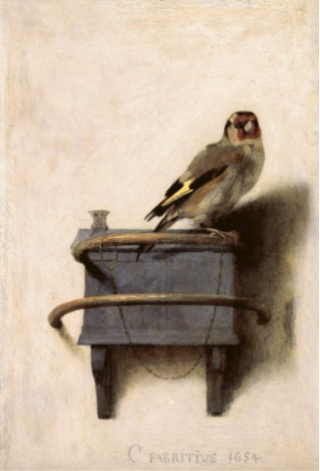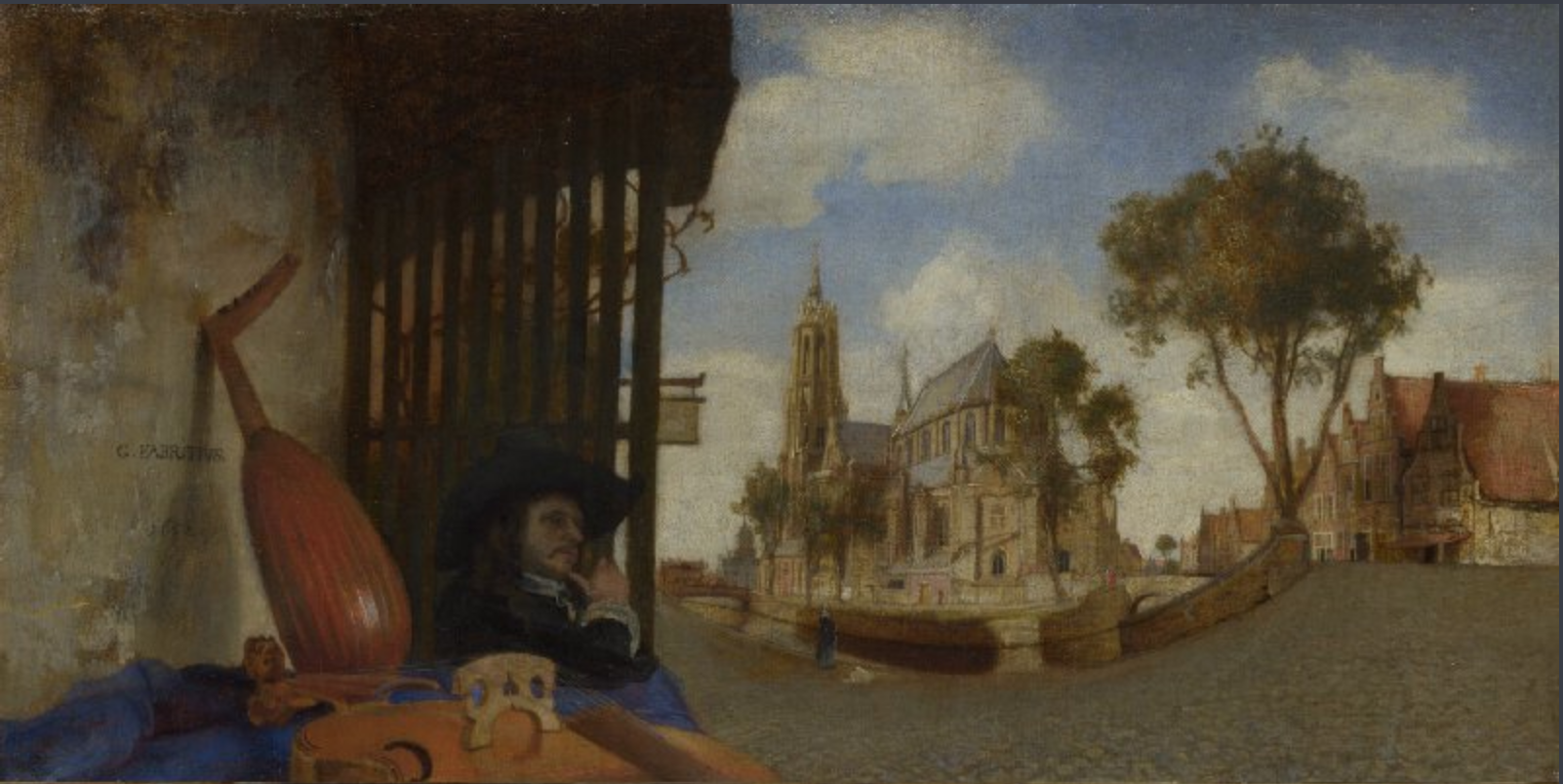MORE people should be talking about Carel Fabritius...
Carel Fabritius, The Goldfinch, 1654. Panel, 33.5 x 22.8 cm. The Hague, Mauritshuis
The story of Carel Fabritius reflects one of lost potential. He is often overshadowed by other significant artists of his time, “Thus did this Phoenix, to our loss, expire, In the mid stand at the height of his powers, But happily there arose out of the fire Vermeer, who masterfully trod in his path”. It is believed that his first painting lessons were from his father. In 1641, he married the pastor’s sister at 19 years old and shortly after went to study under Rembrandt. In Amsterdam, he befriended Vermeer and mastered Baroque painting techniques like tenebrism. His stay was cut short when he learned of his wife’s passing during childbirth. In 1650, Fabritius moved to Delft where he married for the second time and joined a painter’s guild. While living in Delft he developed his own personal painting style and produced some of his most famous artworks including A View in Delft, with a Musical Instrument Seller’s Stall (1652) and The Goldfinch (1654). He had also gained a reputation for painting illusionistic murals in private homes for the Dutch elite. In October of 1654, a magazine powder explosion ended his life when he was 32 years old. There are only 13 paintings surviving that have been accredited to him and they each showcase highly developed painting skills. If Carel Fabritius had lived longer, would he have become an old master of the Dutch Golden Age?
Carel Fabritius, A View of Delft, 1652. Canvas, 15.4 x 31,6 cm. London, The National Gallery
Written by Kaitlan Norman


